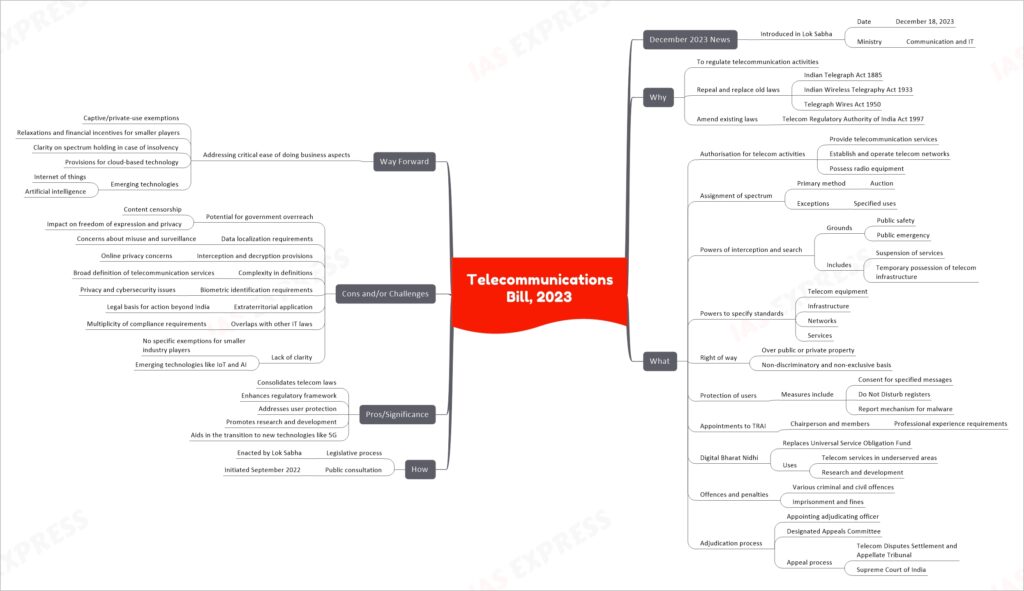Telecommunications Bill, 2023

Summary: The Telecommunications Bill, 2023, introduced in India’s Lok Sabha, is a significant legislative overhaul aimed at modernizing the country’s telecommunications framework. It seeks to replace outdated laws like the Indian Telegraph Act, 1885, with a more current regulatory structure. Key features include mandatory authorizations for telecom activities, spectrum allocation mainly through auctions, and strengthened government powers for overseeing telecommunication operations. The bill emphasizes user protection and introduces the ‘Digital Bharat Nidhi’ to foster telecom advancements, especially in underserved areas. However, it faces criticism for potential government overreach, privacy infringements, and ambiguities in its broad definitions, such as those encompassing telecommunication services. The bill’s implementation will necessitate careful consideration of these challenges, ensuring that it supports industry growth while safeguarding user rights and privacy. Its success hinges on striking a balance between regulatory needs and fostering a conducive environment for technological advancements in the telecom sector.
If you like this post, please share your feedback in the comments section below so that we will upload more posts like this.

